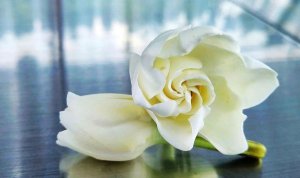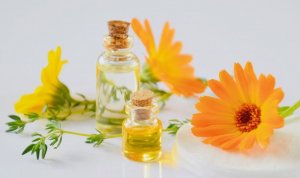The art of layering fragrances, which is also known as fragrance cocktailing, can be simply defined as knowing how to combine two different perfumes on top of one another in order to create an entirely new and unique aroma. Whether layering a fragrance to create a unique brand or just for the sake of experimenting with a new personal touch, the process is the same.
Layering is a simple idea that opens the door to a million aromatic possibilities. Like any experiment, trial and error is part of the process, which means the path to the creation of the perfectly layered fragrance is likely be strewn with aromas one would rather forget.
Signature Scents and Fragrance Layering
Finding that perfect signature scent is an elusive quest accomplished only after significant time and effort. Once established, nothing could be less productive and upsetting than discovering that scent on someone or something else.
Signature scents represent a company’s never ending quest for uniqueness and exclusivity. Once created by the expertise of perfume masters, like those at Alpha Aromatics, these fragrances often become cherished secret formulations that are intended to pass from generation to generation, much like family heirlooms.

With the dynamic nature of thousands of new fragrance options every year, the signature scent has morphed into a highly tailored thing that is meant to be adjusted to coincide with changes in complex company moods and desired perceptions.
Even brands offering well known and very sophisticated fragrances, such as Dior’s new J’adore Touche de Parfum, are layering their scents more often for the sake of enhancing the customer experience. Although this particular perfume is deep and rich and can easily stand on its own, the fact that it can be layered with others from the same line not only creates a different scent, but also an entirely different, one-of-a-kind olfactory adventure.
Layering Perfume For Brands and Individuals
Layering begins long before the scent is applied to the human body. The concept is born in the conventional shower where a baseline scent lives happily in an individual’s personal choice of body wash, soap, shampoo, etc.
According to junior perfumer, Alexander Lee, “I always saw fragrance as invisible pieces of clothing. For me, fragrance combining is simply wearing multiple fragrances at the same time with the goal to create a personal olfactive form. It’s an outlet for the perfume lover to be creative. In fact, a perfume is the result of combining singular perfume notes with other complex accords. Fragrance layering is like walking in the shoes of a master perfumer!”
Newcomers to this artistic process of experimentation could begin by focusing on combining two fragrances that have a common note, like Gardenia. If that doesn’t come out as desired, try the opposite approach of blending two or more opposing fragrances, like amber and spice.

Layering For Personal Fragrances
While starting at the beginning makes perfect sense for some things, in the case of personal fragrance layering, it begins before the process starts with a collection of tried and true perfume favorites. Brian Jeong and Phil Wong, co-founders of Hawthorne for Men, tell us, “Having a solid foundation is very important when building on top of it through mixing. Once you have your ‘palette’ or core rotation, you should think about what parts of each fragrance you enjoy the most. You can then find other fragrances that enhance that element and use them to create your mix.”
While an individual might assume that layering scents means spraying two perfumes directly on top of each other, this is not the case. There are other options, such as spraying one scent on the wrist and another on the neck. A big no-no, Nanette, is the habit of rubbing wrists together because such action tends to “strip” the fragrance of its top notes. Jeong and Wong compare it to “smearing a beautiful painting.”
According to Patti Kapla, President of Business Development at Fragrance Net, “… the skill of layering is all about incorporating the right scents into other aspects of your beauty routine to make your perfume work better for you, or to change your scent in unique ways for more impact. As a general rule, you want to start by layering scents that are in or close to the same scent family, such as Woody, Floral, Oriental, Fresh and Citrus. Vanilla, musk, and most citrus scents are all “safe” notes that work well in most layering situations. “Vanilla adds a sweet creaminess, musk brings out a spicy sultriness, and citrus adds a bright, refreshing touch.”

According to Mark Crams, Demeter Fragrance Library CEO, fragrance-layering novices should concentrate on either a single fragrance family or those that are closely related. He states: “Blending three different vanilla scents is easier than a vanilla, a flower, and a wood. Citrus, fruit or vanilla scents work well with most floral, green notes, and woods, while animalistic ones, like leather, present greater challenges.”
Experimenting with different combinations is the best way to discover that unique scent. A good rule to remember is that heavier scents should be sprayed first so they do not overpower the lighter ones that follow. There are many schools of thought, but no rules set in stone when fragrance layering except to start simply with a favorite scent.
Any Brand Can Benefit From Fragrance Layering
As is the case with personal fragrance, layering perfume should be considered a fashion statement. One rule of thumb is to match an aroma that is complex with one that is simple, not unlike the pairing of a plain dress with a complex accessory. Thinking outside of that “scent box” requires a hefty dose of courage, but it is only through experimentation that a brand or a person can reach olfactory nirvana.
Market research indicates that many of today’s perfume consumers are seeking newer versions of older classics with the Eau de Toilette and the Eau de Parfum favorites. Each month, some modified version of a recognized perfume appears on the scene that permits fragrances to be artfully tweaked to suit the season, mood or occasion.
Fragrance Layering and The Importance of Notes
The potential for expression beyond the confines of prepared fragrances is virtually endless. According once again to Mark Crams, “Layering a single-note scent with a complex fragrance is something people do all the time… Singular scents are the notes and accords perfumers use to create the more complex designer and prestige fragrances.
Blending them is like using a palette of paints to paint a picture… Singular scents express their nature immediately and do not change over time. A complex fragrance evolves and can change drastically as its base notes develop and its top notes fade. A combination that smells divine at first might be less desirable hours later. Anything more intense is going to take longer to fully express itself.”

Which Scents Complement Each Other and Which Clash?
There will always be two ideologies concerning fragrance. One asserts that every finished scent is a unique work of art and should remain as it was originally created. Others believe in using perfume notes and blending scents to build an individualized version. The result is highly personal and captures the attitude or mood a brand or an individual opts to project. Understanding which aromas go best with others requires knowledge of perfume notes and how they work together to make a one-of-a-kind fragrance.
According to Rachel ten Brink, CMO and co-founder of Scent Bird, who has worked in the fragrance industry for over 15 years for L’Oreal, Estee Lauder and Elizabeth Arden, “Single note fragrances or lighter fragrances are easier to layer. This is especially true of heady fragrances—think Chanel No. 5, Shalimar, and Opium—or evening/noir fragrances—Versace Noir and Tom Ford Black Orchid. These are usually too much if combined and may end up giving you a headache.”
Understanding Top Middle And Base Notes Of Perfume
Just as the notes of a haunting melody coalesce to become a one-of-a-kind musical composition and tinges of color transform into a painting, so do the notes of all perfumes. There are three distinct note scales, each of which has their own primary purpose.
The lightest are the top notes, which are instantly recognized upon perfume application. Due to the fragile and light molecular structure, they are the first to fail, but this fact does not diminish their importance. They represent a scent’s first impression. In addition to the allure of the top note, it must also serve to transition ever so fragrantly into the very heart of the scent. Common top notes are citrus (lemon, bergamot and orange zest) and light fruit (grapefruit, berries and herbs).
The middle notes appear after the top ones evaporate. They are considered the essence of the fragrance and they linger longer than the top notes. They also greatly influence the base notes to come. They are generally pleasing and distinct and are often an amalgam of floral or fruit tones. Sometimes, these notes are infused with spices such as cinnamon, nutmeg or cardamom. Some popular middle notes include: geranium, rose, lemongrass, yiang yiang, neroli, jasmine, lavender and coriander.
The Base Notes Are The Coup De Gras Of Fragrance
Base notes are the swan song of the fragrance. Their function is to mingle with the heart notes to create the full body of the scent, a time span sometimes known as the “dry down period.” They provide and sustain the lasting impression, and these notes linger on the skin for hours after the top notes have evaporated. Some popular base notes include: cedar-wood, sandalwood, vanilla, amber, patchouli, oak moss and musk.
Which Notes Are Best When Layering A Fragrance?
Every scent has its own texture, which sets it apart from all others. Some powerful notes, such as gardenia, coriander, tuberose, incense and cinnamon, will seek supremacy over the others, which may be similar but are lighter. Single notes from similar families blend much better than clusters of random scents. Such combining also permits better control of the resulting fragrance. For example, a single note of vanilla goes a lot further than a solitary note of gardenia.
 Roger Howell Alpha Aromatics Master Perfumer
Roger Howell Alpha Aromatics Master Perfumer
For more subtle effects, always spray the stronger note first, so that it is present but does not overwhelm the other lighter scents. Lilies and violets are considered light aromas but they are also powdery, which tells a perfume artisan such as those at Alpha Aromatics, that it is likely they will complement a scent such as tuberose. Oriental, green and floral fragrances generally pair well together. Earthier and spicier notes, such as nutmeg, clove and cinnamon, blend favorably.
In Conclusion
We have a long, noble and very aromatic past that began more than seven decades ago. Headquartered in Fox Chapel, PA, we offer customized scents for any type and size of company throughout the world, whether it be a start-up in the United States or a well-known global name. Our fragrances have defined fine perfumes, private labels, personal care product, natural and organic fragrances, candles and diffusers and more.
Despite our many diverse offerings, we specialize in natural, organic and synthetic fragrance sectors that aid all industries in improving their bottom line via the deployment of scent branding. Most importantly to you and us, we strive to innovate and nurture creativity, while priding ourselves on adhering to the highest levels of perfumery ethics and regulatory standards in the world. Take the most important step towards defining your brand or product line today!
Final thoughts on fragrance: Perfumery is a symphony. It has a beginning, middle and an end. ~Isabelle Ramsey Brackstone
This blog was crafted and written with the insight and direction of Arnold Zlotnik, our chief perfumer, Roger Howell, and our Alpha management staff. Learn more about our company’s rich history in the fragrance industry, our credentialed perfumers as well as the creative intent and passion we place behind our every creation.
 alpha aromatics®
alpha aromatics®